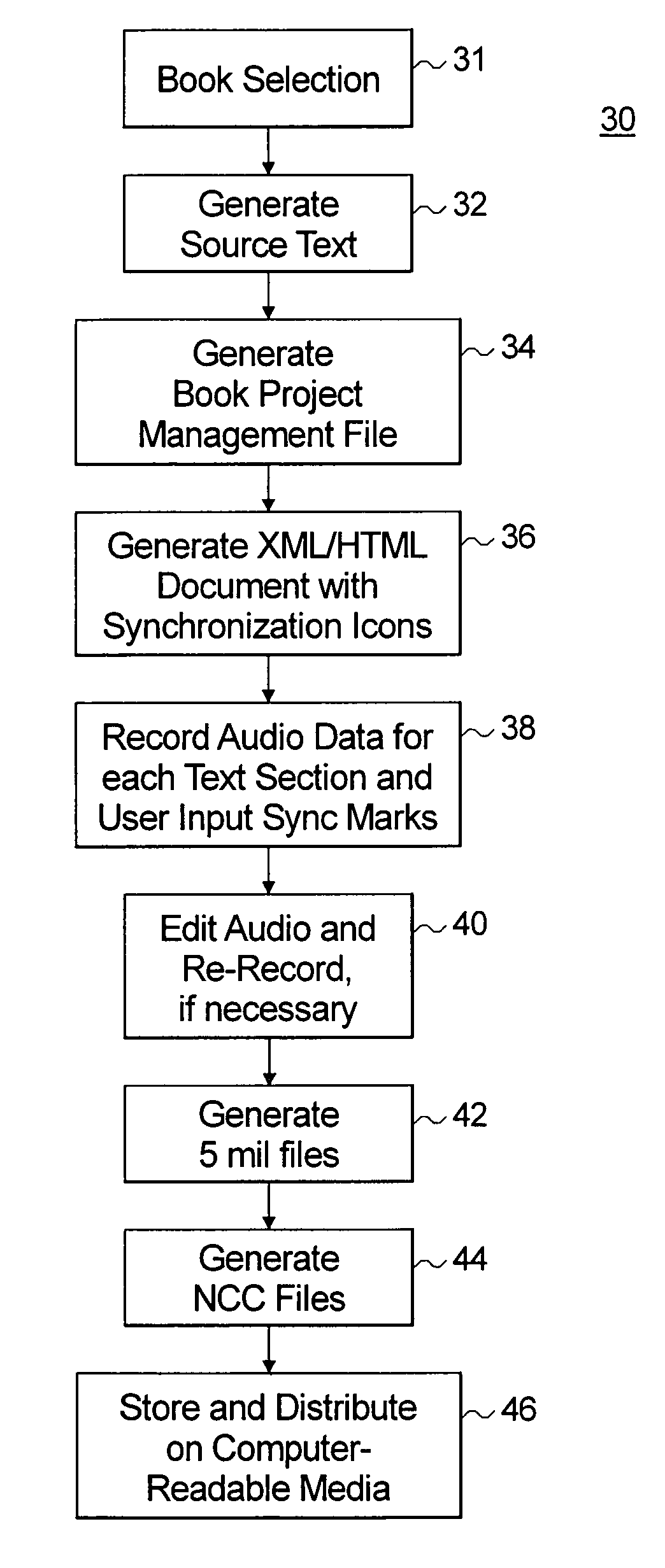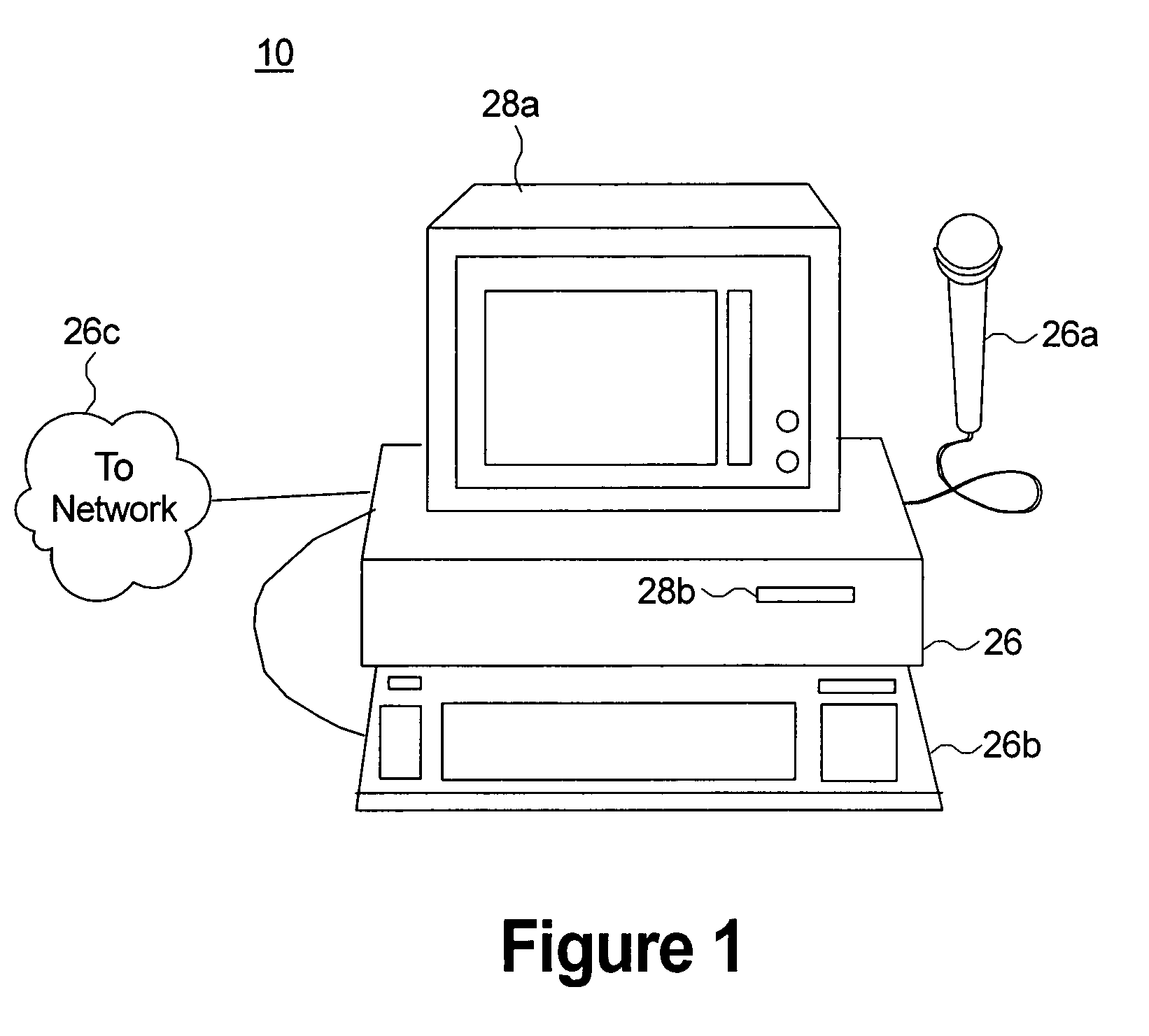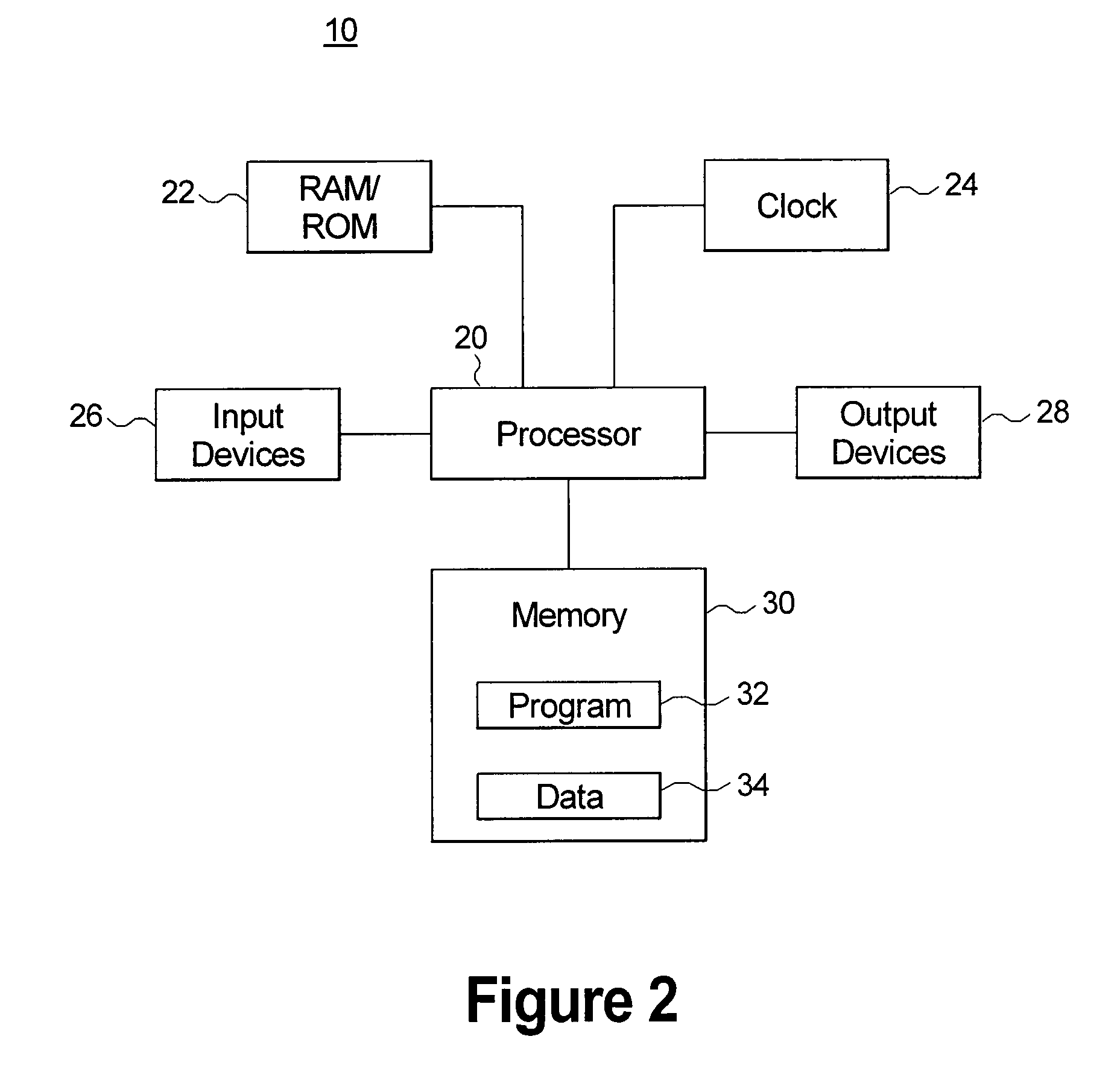Method and apparatus for synchronization of text and audio data
a text and audio data technology, applied in the field of data processing and speech signal processing, can solve the problems of limiting the ability of the ordering sequence and other attributes of the text file, and not being economically feasible to have one narrator do i
- Summary
- Abstract
- Description
- Claims
- Application Information
AI Technical Summary
Benefits of technology
Problems solved by technology
Method used
Image
Examples
Embodiment Construction
[0019]Referring now to FIGS. 1–4D, wherein similar components of the instant invention are referenced in like manner, a preferred apparatus for synchronizing audio and text or image data, and accompanying methods for using the same, are disclosed.
[0020]Depicted in FIG. 1 is an exemplary computer workstation 10 to be used by a narrator and for synchronizing audio and text data according to the present invention. Workstation 10 is to be used by a person who is to read (narrate) and record data from the text source, such as a book. Hereafter, such person who inputs audio data is referred to as a “narrator” as distinguished from the person who listens to the playback and is called a “user”. There can be a plurality of the workstations at different locations to accommodate a plurality of narrators.
[0021]Each workstation can operate on a stand alone basis or be linked as part of network. Each workstation preferably includes a computer and several external interface devices. The computer h...
PUM
 Login to View More
Login to View More Abstract
Description
Claims
Application Information
 Login to View More
Login to View More - R&D
- Intellectual Property
- Life Sciences
- Materials
- Tech Scout
- Unparalleled Data Quality
- Higher Quality Content
- 60% Fewer Hallucinations
Browse by: Latest US Patents, China's latest patents, Technical Efficacy Thesaurus, Application Domain, Technology Topic, Popular Technical Reports.
© 2025 PatSnap. All rights reserved.Legal|Privacy policy|Modern Slavery Act Transparency Statement|Sitemap|About US| Contact US: help@patsnap.com



